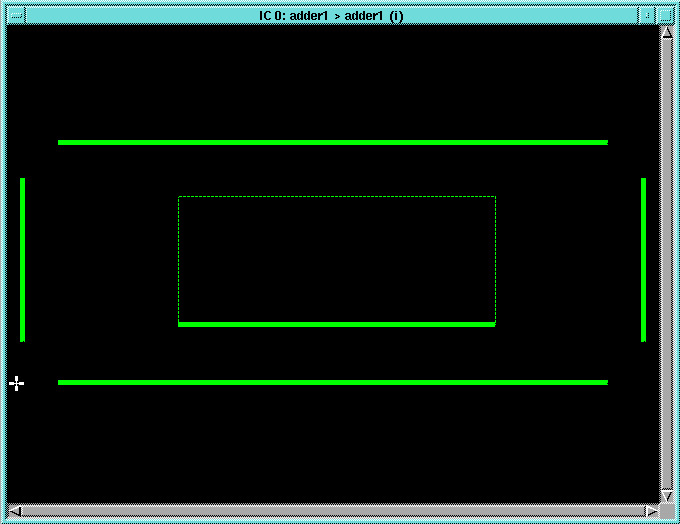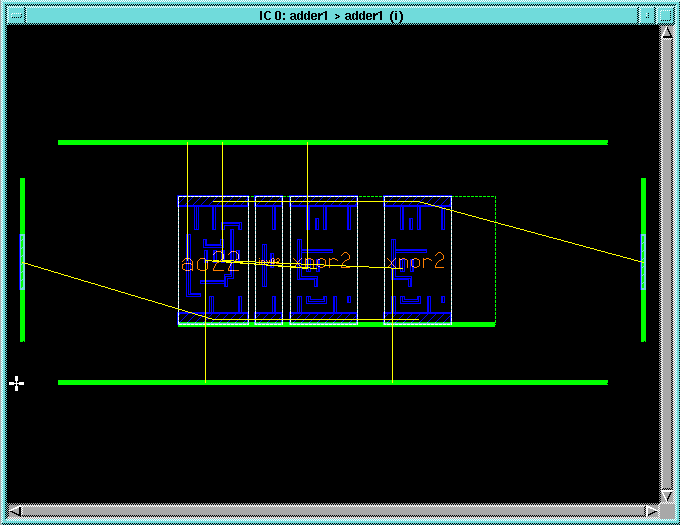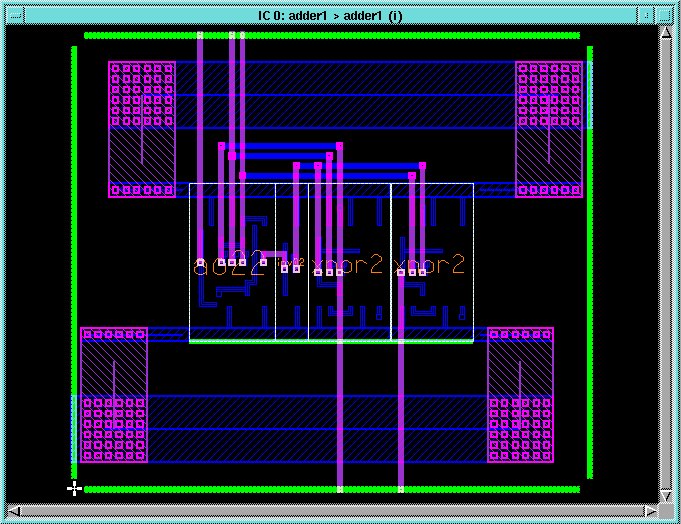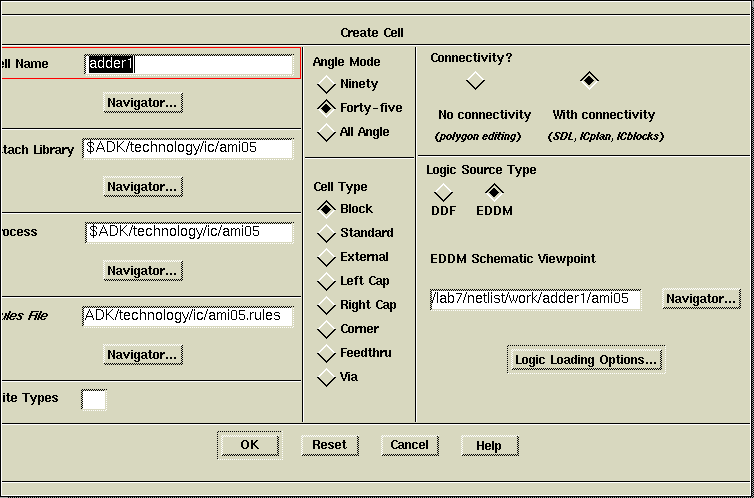2.1 Click on
Floorplan in the
IC Palettes
palette. In the
Floorplan palette, click
Autofp. Leave the
default setting in the
Autofloorplan Options dialog box that pops
up and click
OK. This will result in a set of floorplan shapes being
added to the
adder1 window which specify the rows into which the
standard cells that make up the
adder1 component will be placed
and the external edges of the block onto which the ports will be placed.
The
adder1 window should look like the one below:

2.2 Click Back in the Floorplan palette and click Place
& Route in the IC Palettes palette. In the Place &
Route palette, click StdCel under the Autoplc item. Leave
the default options set in the dialog box that comes up and click OK.
Next, click Ports under the Autoplc item. Leave the defaults
checked in the dialog box that pops up and click OK. The result
should be an adder1 window that looks like this one:

2.3 From the Place & Route palette select All under
the Autorou item. Click Options in the Autoroute All
dialog box that comes up. In the Autoroute All Options dialog box,
click Expert options. Select Channel Over Cell Routing and
click OK in the Router Expert Options dialog box that comes
up. Click OCR options back in the Autoroute All
Options dialog box and set the step size to .5 and the
Operation
Mode Type to Center Weighted and click OK in the OCR
options dialog box. Finally, click OK in the Autoroute All
Options dialog box and the Autoroute All dialog box to begin
routing. Depending on the size of the design this may take several minutes.
When the process has completed the mouse pointer changes back from an hourglass
to an arrow and the results of the process are in the transcript. The result
should be an adder1 window that looks like the one below:

This small design will route completely the first time. However, for
large designs, some un-routed overflows may still exist. These overflows
must be routed as described below:
This step is necessary even if overflows don't immediately appear in
the routed layout. When zoomed out small overflows may not be viewable,
but may still exist. To select all overflows in the design type "check
over". In the form window that appears select All and OK
the form. Next, from the Place & Route palette select Overflw.
If the response "An object of type Overflow must be selected" appears in
the status block, there are no overflows to route. Otherwise, the overflows
will be routed.
2.4 Save the layout by selecting File->Cell->Save Cell->Current Context.
You may save the layout and exit the ICStation session
at any time. To re-load the layout later, choose open from the IC station
palette. If you wish to make changes to the cell, you must also selectFile->Cell->Reserve
Cell->Current Context.



